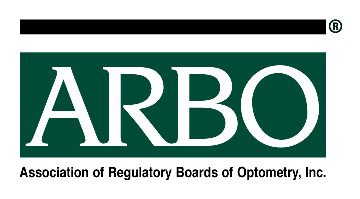By Dale Atkinson, Esq.
A recent ARBO Happy Hour webinar addressed the important topic of Board audits. Regulatory Board audits is a broad topic covering not only financial performance and compliance with fiduciary obligations but also aspects of board effectiveness and efficiencies. First and perhaps most importantly, Boards of Optometry must know why they exist; specifically, why they were legislatively created and delegated with the authority to enforce the practice act. While we are all accustomed to reciting the “public protection” purpose of government regulation, a more encompassing response is in order.
How does this relate to Board audits? To substantiate the continued existence of a Board or to address legislative changes to optometry regulation, it is incumbent for that Board to understand and articulate why it exists in the first place. Regulatory Boards are encouraged to dedicate time on their meeting agendas to the “why” question as well as to strategic and generative discussions. Understanding the why, and where a board is heading, will assist in preparing for legislative and executive branch scrutiny.
Boards of Optometry are encouraged to engage in outreach to remind readers what the board does and that it is doing so in an effective and efficient manner. In addition to communicating with applicants and licensees, communication efforts can involve ongoing reports to the legislative and executive branches of government. When reaching out to government entities, communications can include invitations to attend board meetings, identification of significant events and accomplishments, and constant reminders of the role of the Board of Optometry. Forging relationships with the legislative and executive branches of government can stimulate reciprocal notices related to amendments to the practice acts and board composition and governance structures.
Additional outreach can be geared towards trade, academia, media and other outlets that can assist in not only understanding but also promoting regulation. Boards of Optometry also have websites, prepare newsletters, and may have a presence on social media. Use these vehicles to promote regulation and demystify what and why the Board of Optometry exists.
One of the most influential communication efforts involves board meeting minutes. Make sure that board meetings are well run and that the minutes reflect why the board exists and the efficiency of its operations. Use statistics to help identify the important role the Board of Optometry plays. Read into the record the mission statement and vision and values of the board at every meeting. Note statistics related to applications for licensure and renewal, the number granted and denied, the number that remain pending and the average time from completion to issuance. Similarly, the number of complaints, how many were resolved, how many remain pending and the average time from complaint to resolution. The number of phone calls to the board, hits to the website, number of newsletters sent, opened and read, and communication efforts to legislative and executive government can also assist in identifying board self-knowledge and effectiveness.
Boards of Optometry should welcome and always be prepared for audits or sunset review. Annual reports, whether required or not, should be prepared and disseminated to relevant government entities. You can be the stimulus to preparedness and influential communication and outreach. We encourage you to take advantage of these opportunities.
